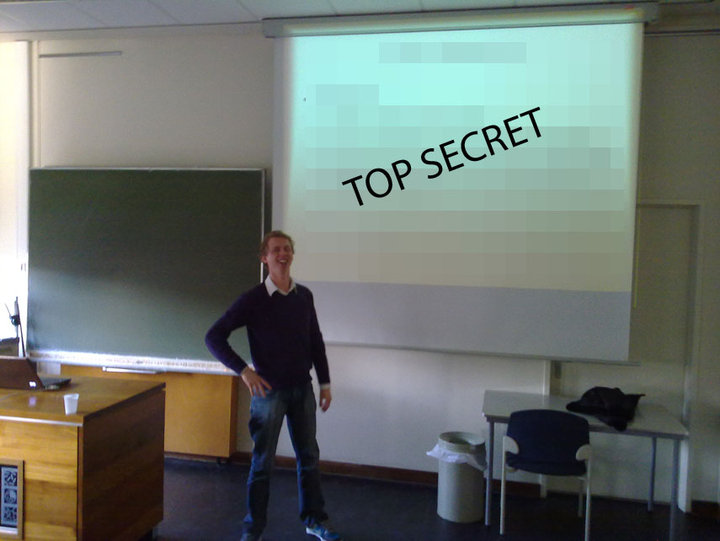Team:TU Delft/9 April 2010 content
From 2010.igem.org
(Difference between revisions)
(→Session 6) |
|||
| Line 46: | Line 46: | ||
[[Image:TUDelft_Brainstorm.jpg|350px|thumb|left|Presentation by Pieter]] | [[Image:TUDelft_Brainstorm.jpg|350px|thumb|left|Presentation by Pieter]] | ||
| + | |||
| + | ==Hugo's Risk Scale== | ||
| + | We used the Hugo Risk Scale (HRS) to determine whether an idea was feasible or not. | ||
| + | |||
| + | Risk is represented with a value from 0 (no risk) to 10 (very risky) | ||
| + | # Lac operon (or other piece of cake) + our biobrick | ||
| + | # Less than 5 genes or biobricks (copy-paste) + our biobrick | ||
| + | # Less than 10 genes or biobricks (copy-paste) + our biobrick | ||
| + | # Biobrick engineering <5, improvement of things already done | ||
| + | # Multi biobrick engineering >5, improvement of things already done | ||
| + | # Site directed mutagenesis of several genes, results unknown a priori | ||
| + | # Evolutionary engineering involved = sequencing | ||
| + | # Protein engineering involved, results unknown a priori | ||
| + | # A lot of genes and/or biobricks (>20), known genes in other species and characterized. Stress, social friction | ||
| + | # A lot of genes and/or biobricks (>20), Known genes in other species, not fully characterized. Start a project one-eyed = stress, social friction, high chances of collapse | ||
| + | # A lot of genes (>20), Unknown genes= characterization + sequencing + cloning. Start a project from nothing or partially blind, team-member losses + obituraries. Good side: paper in Nature or Nobel | ||
Revision as of 13:13, 27 October 2010
Session 6
During the meeting 9 presentations were given on different possible subjects, and following the presentations the team voted on whether we should continue with the idea or not. These were the subjects, and the outcome of the vote:
- Exhaled breath analysis
Vote: Yes (6/8)
- Soil Sampling
Vote: No (2/8)
- Mosquito’s/Parasites
Vote: No (0/8)
- Cell shrinkage
Vote: No (2/8)
- Oil remediation (Hydrocarbon biodegradation)
Vote: Yes (8/8)
- Bacterial buffer
Vote: No
- Rainbow pH sensor
Vote: Yes (8/8)
- Ice melting
Vote: No (0/8)
- Biofilms (Linked to cell density measurement?)
Vote: Part of another project
- Bacterial eye
Vote: Yes (7/8)
- GMOs in the Gut
Something to add to another idea
Chosen Ideas:
- Colon cancer detection
- Oil remotion
- Rainbow pH Sensor
- Bacterial Eye
Hugo's Risk Scale
We used the Hugo Risk Scale (HRS) to determine whether an idea was feasible or not.
Risk is represented with a value from 0 (no risk) to 10 (very risky)
- Lac operon (or other piece of cake) + our biobrick
- Less than 5 genes or biobricks (copy-paste) + our biobrick
- Less than 10 genes or biobricks (copy-paste) + our biobrick
- Biobrick engineering <5, improvement of things already done
- Multi biobrick engineering >5, improvement of things already done
- Site directed mutagenesis of several genes, results unknown a priori
- Evolutionary engineering involved = sequencing
- Protein engineering involved, results unknown a priori
- A lot of genes and/or biobricks (>20), known genes in other species and characterized. Stress, social friction
- A lot of genes and/or biobricks (>20), Known genes in other species, not fully characterized. Start a project one-eyed = stress, social friction, high chances of collapse
- A lot of genes (>20), Unknown genes= characterization + sequencing + cloning. Start a project from nothing or partially blind, team-member losses + obituraries. Good side: paper in Nature or Nobel
 "
"
